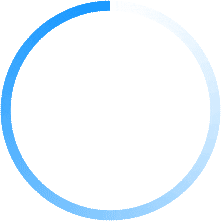Report Coverage
This report focuses on mining in central Africa, covering Burundi, Cameroon, Central African Republic, Chad, Republic of Congo, the Democratic Republic of Congo, Equatorial Guinea, Gabon and Sao Tomé and Principe. It includes information on mineral occurrences and major mining and exploration activity in these countries, trade and corporate actions, investment and developments. There are profiles of 19 companies operating in the region such as China Molybdenum Company, China Railway Group, , Glencore, Kibali Goldmines, Kore Potash and Rainbow Rare Earths.
Introduction
The latest World Mining Data report indicates that in 2019, Central Africa produced 62.9% of the world’s cobalt, 28.3% of its tantalum, 14.7% of its manganese, 9.9% of its diamonds and 7.2% of its copper. In 2019, Central African countries exported minerals worth US$2.6bn, according to the International Trade Centre’s Trade Map. Factors such as the impact of the coronavirus pandemic, low economic growth in major mineral importers and inadequate infrastructure are having an impact on the performance of Central Africa’s mining sector.
Strengths
• An important producer of cobalt, tantalum, manganese, diamonds and copper.
• Central Africa is an established mining region.
• Several large mining companies are present.
Weaknesses
• Artisanal mining is often associated with smuggling, revenue loss, child labour, human rights abuse, and environmental and human health concerns.
• General lack of skilled employees.
• Lack of infrastructure, especially roads and electricity in rural areas.
Opportunities
• Many deposits are not being exploited.
• Most countries are trying to develop their mining sectors.
• Rising demand for metals used in electric vehicles, such as cobalt, copper, iron ore and manganese.
Threats
• Rising input costs, especially electricity and transportation.
• Some manufacturers are looking at sourcing cobalt from other regions, or lessening their dependence on the metal, because of the risk of purchasing cobalt linked to unacceptable practices such as child labour.
• The impact of the coronavirus pandemic on demand for minerals.
Outlook
Analytics company S&P Global Market Intelligence expects global capital expenditure by a group of 400 mining companies studied to increase by 18% year-on-year to more than US$176bn in 2021, largely due to a resumption of projects delayed by the coronavirus pandemic, and the commencement of new projects in response to high demand for a range of minerals. Commodities trading company Trafigura forecast global cobalt demand will double by 2030 from 2020 levels, mainly due to growth in electric vehicle manufacturing, which is expected to account for 75% of the demand increase.Demand for some of Central Africa’s major minerals such as cobalt, columbite-tantalite, copper, diamonds, gold and tin is expected to increase, leading to higher production and mining revenues in the region. According to Trafigura’s head of corporate responsibility, James Nicholson, the DRC’s cobalt production is expected to account for 70% of global production by 2025. A few cobalt, copper, gold, iron ore, lithium, nickel, phosphate, potash and zinc deposits in Central Africa are expected to be developed into mines over the next few years.
Full Report
R 1 900.00(ZAR) estimated $107.09 (USD)*
Industry Landscape
R 1 330.00(ZAR) estimated $ 74.96 (USD)*
Table of Contents
[ Close ]| PAGE | ||
|---|---|---|
| 1. | INTRODUCTION | 1 |
| 2. | REGION INFORMATION | 1 |
| 3. | DESCRIPTION OF THE INDUSTRY | 2 |
| 3.1. | Industry Value Chain | 5 |
| 3.2. | Geographic Position | 6 |
| 4. | SIZE OF THE INDUSTRY | 12 |
| 5. | STATE OF THE INDUSTRY | 14 |
| 5.1. | Local | 14 |
| 5.1.1. | Trade | 17 |
| 5.1.2. | Corporate Actions | 21 |
| 5.1.3. | Regulations | 24 |
| 5.2. | Continental | 27 |
| 5.3. | International | 27 |
| 6. | INFLUENCING FACTORS | 28 |
| 6.1. | Coronavirus | 28 |
| 6.2. | Economic Environment | 29 |
| 6.3. | Technology, Research and Development (R&D) and Innovation | 29 |
| 6.4. | Lack of Infrastructure | 30 |
| 6.5. | Government Incentives and Support | 31 |
| 6.6. | Environmental Concerns | 32 |
| 6.7. | Labour | 32 |
| 7. | COMPETITION | 34 |
| 7.1. | Barriers to Entry | 34 |
| 8. | SWOT ANALYSIS | 34 |
| 9. | OUTLOOK | 35 |
| 10. | INDUSTRY ASSOCIATIONS | 35 |
| 11. | REFERENCES | 36 |
| 11.1. | Publications | 36 |
| 11.2. | Websites | 36 |
| APPENDIX 1 | 38 | |
| Summary of Notable Players | 38 | |
| COMPANY PROFILES | 43 | |
| ALPHAMIN RESOURCES CORPORATION | 43 | |
| AVESORO RESOURCES INC. | 46 | |
| AVZ MINERALS LTD | 49 | |
| CAM IRON SA | 51 | |
| CAMEROON ALUMINA LTD | 53 | |
| CHEMAF SPRL | 55 | |
| CHINA MOLYBDENUM COMPANY LTD | 57 | |
| CHINA RAILWAY GROUP LTD | 59 | |
| COMPAGNIE MINIERE DE I\'OGOOUE S.A. | 65 | |
| ERAMET S.A. | 67 | |
| GLENCORE PLC | 71 | |
| IVANHOE MINES LTD | 79 | |
| JINCHUAN GROUP INTERNATIONAL RESOURCES CO LTD | 82 | |
| KIBALI GOLDMINES S.A. | 85 | |
| KORE POTASH PLC | 87 | |
| KROPZ PLC | 90 | |
| LA GENERALE DES CARRIERES ET DES MINES S.A. | 92 | |
| MANAGEM S.A. | 94 | |
| SOCIETE MINIERE DE BISUNZU SARL | 98 | |
| SOMIKA S.A.R.L. | 100 | |
| ZANAGA IRON ORE COMPANY LTD | 101 |



